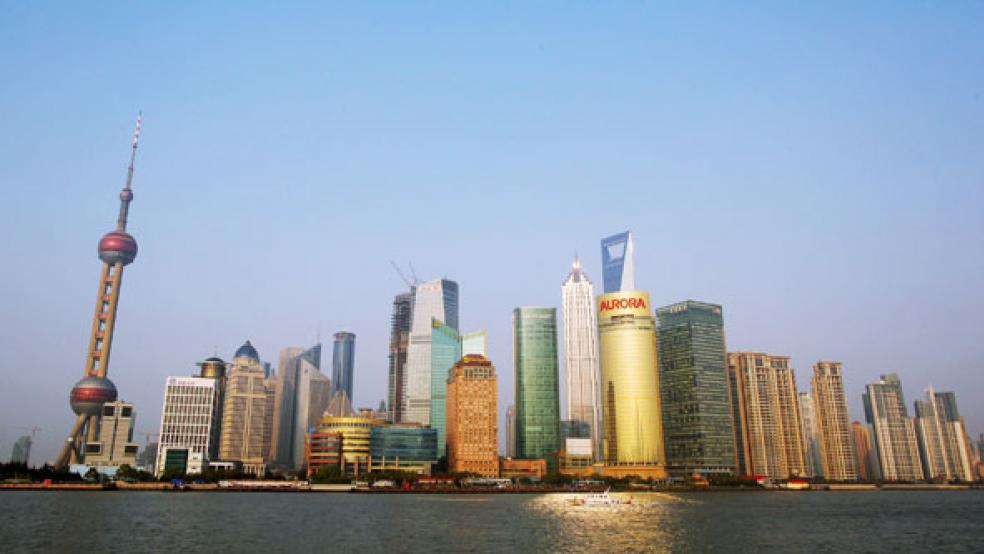In the late 1980s, economic development was dominated by “the Washington consensus,” which was embraced by the International Monetary Fund, the World Bank and much of the economics profession. It held that free market policies in trade, finance, and exchange rates, coupled with strong property rights and the rule of law, were the key to growth. This is no longer anywhere near the consensus opinion, at least outside the U.S.
The recent summit of leaders from Brazil, Russia, India, China and South Africa, known as the BRICS countries, held at an island off southern China, underscores the fact that there are other ways to grow an economy. China has pursued a radically different, yet successful model, and other developing countries, also headed by authoritarian governments, are paying attention. Call it “The Beijing Consensus;” an economic system that accounts for China’s astounding growth.
“The Beijing consensus is about remaining authoritarian while harnessing the market,” says Stefan Halper, senior fellow at Cambridge University, and author of the recent book, The Beijing Consensus. Though the precise model is country specific to China, it has appeal for authoritarian elites worldwide. “This great news for the Saudis, the Russians, and others,” Halper says.
Although China is not yet fully up to speed on every aspect of the production process, it doesn’t directly subsidize or target specific sectors for improvement. The Chinese approach is more subtle. Instead of protective tariffs and subsidies, the Chinese have accumulated huge amounts of foreign reserves, tantamount to giving cheap credit to foreigners to finance Chinese exports.
or the soundness of U.S. government
policies; it holds U.S. Treasury securities
for one reason: to undervalue the Chinese currency.
“Through foreign reserve accumulation, a government is able to, in effect, subsidize exportable goods and grow more quickly,” says Anton Korinek, a macroeconomist at the University of Maryland. “Through exchange rate manipulation, you make exportable goods more valuable than non-exportable. You pull more people into that sector of the economy, which also happens to be quite capital intensive.” China grows more quickly as it increases its know-how in the sectors that could most benefit from it.
The reserves aren’t the result of a trade surplus—they drive it. Chinese foreign reserves now equal close to 50 percent of its GDP. China holds more than $1 trillion in U.S. Treasury securities, making it the largest foreign holder of U.S. government debt. It hasn’t accumulated these reserves because it strongly believes in the U.S. debt or the soundness of U.S. government policies; it holds them for one reason: to undervalue the Chinese currency.
The U.S. continues to pursue the “Washington consensus.” -- a phrase coined in 1989 when South America was dealing with high inflation. It has come to describe laissez-faire economic policies and is a symbol of globalization. But laissez faire policies designed for South American economies in the 1980s may be particularly ill suited for Washington’s current economic challenge. The problem is what the Beijing consensus and China’s actions are doing now to the U.S. economy.
Before the financial crisis, these policies might have resulted in lower interest rates and cheap imports for U.S. consumers at the expense of Chinese consumers. But the U.S. is now in a different situation with high unemployment and underemployment. There is a global shortage of demand. China’s policies allow it to capture a greater amount of demand that still exists. This helps China, but hurts the rest of the world.
markets and sets the rules for the debate.
U.S. policy makers seem perplexed by the rise of China. “One should be skeptical about the popularity of a ‘Beijing consensus’ among the hundreds of millions of Chinese peasants, displaced people, and migrant workers who resent their exploitation under state capitalism,” French economist Guy Sorman wrote last year in City Journal. In a recent article in Foreign Affairs magazine, Chinese economist Yang Yao wrote that the strategy cannot continue to succeed because of growing “income inequality and the internal and external imbalances it has created.”
Policy makers here take refuge in laissez faire, not the ideal response if the other side isn’t playing by laissez faire rules. More to the point, the U.S. rejects any controls on capital flows, which could have the desired effect of reducing U.S. demand for imports. This leaves tariffs as the only response to the big U.S. trade deficit, which can benefit some sectors at the expense of others – an approach very different from the Chinese use of capital markets to devalue their currency, thus increasing export-led growth. China now dominates world capital markets and sets the rules for the debate. Its economy grew at a 10.3 percent last year, outperforming the U.S.'s modest 2.9 percent gains. When it comes to how to best respond to China and the potential effectiveness of capital controls, the U.S. hasn't even started the discussion.
Related Links:
Great China Debate: How Fast, How Long (Wall Street Journal)
The Age of America is Ending (MSN Money)
China, Other BRICS Nations Seek Change in Global Economic Order (Washington Post)

